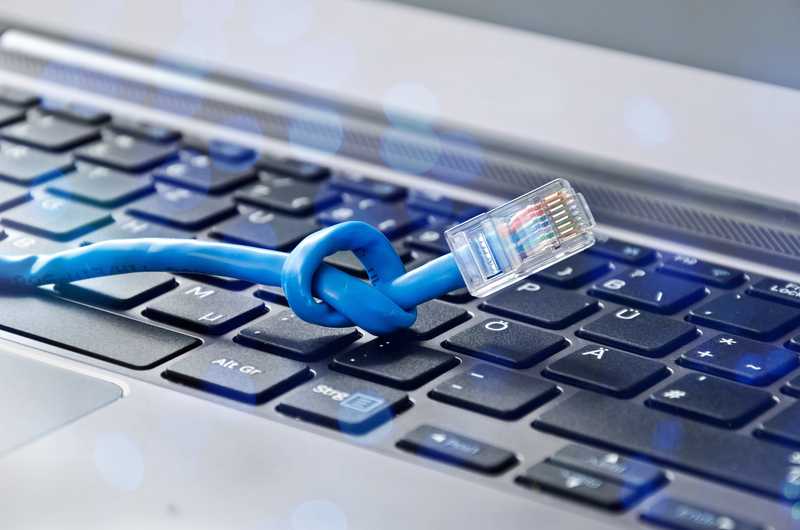
Pretty much everyone in the world nowadays has an internet connection. Whether on their mobiles, tablets, laptops, desktops, or even their smartwatches.
IoT, or the Internet of Things, came to bring wireless connections to home appliances and enhance their functionalities. Also, since the advent of the internet, especially wireless networks, entertainment has reached a whole new level with streaming platforms and file sharing.
Even businesses which at first may have resisted the change have fallen into the virtual world and are now experiencing huge boosts in productivity.
Exchanging emails is way more efficient as a means of communication than old-fashioned letters or memos. Video calls are replacing physical meetings and allowing more and more people to work from outside of their offices while still delivering the same level of results.
Nevertheless, with so many systems, technologies and features, both home and office internet users can still face issues when attempting to access their favourite streaming platforms or work-related online apps.
As it goes, not every computer is equipped with components that can handle the massive data transfer levels high-end users demand. Even though internet plans are increasingly affordable, networking equipment of the highest quality may still be inaccessible to some.
So, if you are experiencing these sorts of problems, there are a few things you can do to help your device work better with the extensive flow of data. Amongst them is setting the list of priorities in your bandwidth usage.
What Is The Priority List In Bandwidth?
According to one of the leading internet service providers in the world, bandwidth is the maximum amount of data transmitted over an internet connection in a given amount of time. In layman’s terms, it is how much data can be processed by your network equipment in a period of time.
To make it even more visual, the amount of data your computer is processing while you try to stream a video has to be higher than the streaming needs. Or else, the process should fail as not enough transfers can be performed to keep the video playing.
Most users are not aware of the internet bandwidth of their systems, which mostly leads them into upgrading their internet threshold upon facing lagging on gaming platforms or interruptions when streaming.
However, there is a number of tricks users can perform to enhance the performance of their internet bandwidth. The most common is to set a list of priorities for their bandwidth.
This is particularly effective in case you have multiple devices connected to the same network, transfer heavy files frequently, or needs that extra internet ‘juice’ for your gaming time.
Therefore, if you see yourself amongst these users, check this simple procedure that should enhance the overall performance of your internet connection.
So, without further ado, here is what you should do in case you need to get the most out of your internet bandwidth.
How Can I Make A List Of Priorities For My Bandwidth?
As mentioned above, setting a list of priorities in your bandwidth might help you reach the top performance of your internet connection. That is because when you put programs on the top of the list of priorities, more data is allocated exclusively for that program.
So, if you put your streaming platform at the top of the list, for instance, all other features that require internet usage will be placed in the second plan. That means they will not sacrifice the data your streaming service needs in order to function.
It’s as if you are telling your device that it should forget about whatever other feature or program that requires the internet for that moment and focus solely on streaming your videos.
So, in the event you feel like that could be effective for your kind of internet usage, check these two easy ways to set the list of priorities in your bandwidth.
The first way to set the list of bandwidth priorities is through the task manager feature of your device . This method may render better results because through it users are granted access to modifying any files in the device’s system memory.
That means the list can get more specific if you choose this method. Also, since the task manager feature is already installed on your device, you won’t have to use any more of your memory to run a third-party program.
Surely, the first method might require a little more tech expertise, but the outcome should be more efficient.
In order to get to the task manager and set the list of bandwidth priority, firstly press the ‘ctrl’, ‘shift’, and ‘esc’ buttons at the same time. That should bring up the task manager feature.
Then, locate and access the ‘details’ tab to see the list of applications installed on your device memory. From there it becomes a mechanical job to locate the apps you need to set at the top of the list and add them to the list of priorities.
To do that, simply locate the app you wish to set as the first on bandwidth usage, right-click it and add it to the list. Then, proceed to the second, third, and so on until the list is created. You can also change the order of the apps in the list at any moment by following the same procedure.
The second method is through third-party programs, which might be a bit more user-friendly, but will not grant you the level of permissions the task manager can.
Also, depending on the program, you might have to pay for a premium subscription, which is not necessary with the task manager. Thirdly, depending on the amount of free memory your device has at the moment, it might not be interesting to add more programs to it.
So, downloading a third-party task manager app may go against the best level of performance of your device as more space in the memory gets taken.
There are currently a variety of programs that perform the task manager functions on the internet. In case you find the system’s task manager too poor on the interface or too hard to deal with, search for a good third-party program and go through it to set the list of bandwidth priorities.
Bear in mind, though, that if you simply decide to stop using an app, it will not stop figuring on the list. So, should you decide to change your streaming platform or game, make sure to reach the list and remove it.
That way you can ensure the program or app that you wish to give the top bandwidth priority is at the top of the list.
Lastly, in the event you come across other relevant information regarding the list of bandwidth priorities, don’t forget to tell us all about it. Many of our fellow readers experience problems with their internet connection usage.
Since they may not be aware that such a simple trick might deliver such a huge boost in performance, by sharing your knowledge you will definitely be helping them out.
Additionally, every bit of feedback helps us build a stronger community. So, it the comments box below and drop us a message to share that extra piece of knowledge you found out!








